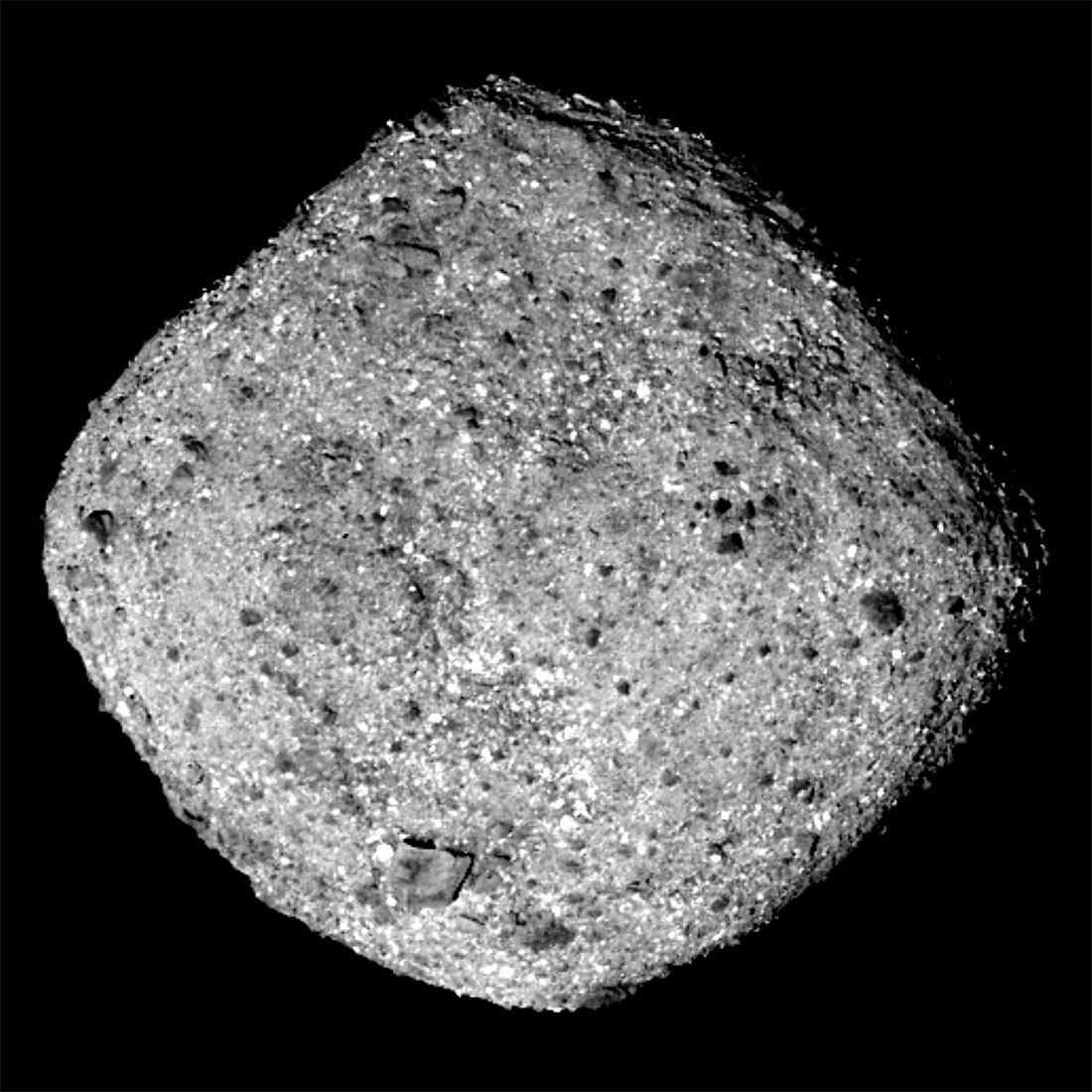After flying 2-billion km, NASA’s Origins, Spectral Interpretation, Resource Identification, Security-Regolith Explorer (OSIRIS-REx) spacecraft has arrived at the asteroid Bennu Monday.
The spacecraft executed a maneuver that transitioned it from flying toward Bennu to operating around the asteroid.
Now, at about 19km from Bennu’s Sun-facing surface, OSIRIS-REx will begin a preliminary survey of the asteroid. The spacecraft will commence flyovers of Bennu’s north pole, equatorial region, and south pole, getting as close as nearly 7km above Bennu during each flyover.
The primary science goals of this survey are to refine estimates of Bennu’s mass and spin rate, and to generate a more precise model of its shape. The data will help determine potential sites for later sample collection.
OSIRIS-REx’s mission will help scientists investigate how planets formed and how life began, as well as improve our understanding of asteroids that could impact Earth. Asteroids are remnants of the building blocks that formed the planets and enabled life. Those like Bennu contain natural resources, such as water, organics and metals. Future space exploration and economic development may rely on asteroids for these materials.
“As explorers, we at NASA have never shied away from the most extreme challenges in the solar system in our quest for knowledge,” says Lori Glaze, acting director for NASA’s Planetary Science Division. “Now we’re at it again, working with our partners in the US and Canada to accomplish the Herculean task of bringing back to Earth a piece of the early solar system.”
The mission’s navigation team will use the preliminary survey of Bennu to practice the delicate task of navigating around the asteroid. The spacecraft will enter orbit around Bennu on 31 December – thus making Bennu, which is only about 492m, or about the length of five football fields, across — the smallest object ever orbited by a spacecraft.
It’s a critical step in OSIRIS-REx’s years-long quest to collect and eventually deliver at least 60g of regolith — dirt and rocks — from Bennu to Earth.
Starting in October, OSIRIS-REx performed a series of braking maneuvers to slow the spacecraft down as it approached Bennu. These maneuvers also targeted a trajectory to set up This week’s manoeuvre, which initiates the first north pole flyover and marks the spacecraft’s arrival at Bennu.
“The OSIRIS-REx team is proud to cross another major milestone off our list — asteroid arrival,” says Dante Lauretta, OSIRIS-REx principal investigator at the University of Arizona. “Initial data from the approach phase show this object to have exceptional scientific value. We can’t wait to start our exploration of Bennu in earnest. We’ve been preparing for this moment for years, and we’re ready.”
OSIRIS-REx mission marks many firsts in space exploration. It will be the first US mission to carry samples from an asteroid back to Earth and the largest sample returned from space since the Apollo era. It’s the first to study a primitive B-type asteroid, which is an asteroid that’s rich in carbon and organic molecules that make up life on Earth. It is also the first mission to study a potentially hazardous asteroid and try to determine the factors that alter their courses to bring them close to Earth.
“During our approach toward Bennu, we have taken observations at much higher resolution than were available from Earth,” says Rich Burns, the project manager of OSIRIS-REx at NASA’s Goddard Space Flight Centre. “These observations have revealed an asteroid that is both consistent with our expectations from ground-based measurements and an exceptionally interesting small world. Now we embark on gaining experience flying our spacecraft about such a small body.”
When OSIRIS-REx begins to orbit Bennu at the end of this month, it will come close to approximately 1,25km to its surface. In February 2019, the spacecraft begins efforts to globally map Bennu to determine the best site for sample collection. After the collection site is selected, the spacecraft will briefly touch the surface of Bennu to retrieve a sample.
OSIRIS-REx is scheduled to return the sample to Earth in September 2023.

This image of Bennu was taken by the OSIRIS-REx spacecraft from a distance of around 50 miles (80 km).
Credits: NASA/Goddard/University of Arizona
